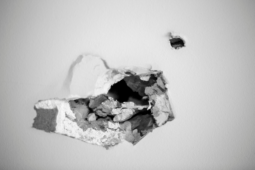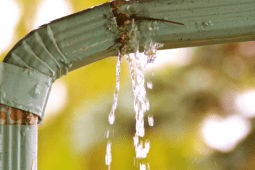Joint Compound vs Spackle: What’s The Difference?
Wall repair can be a simple endeavor or it can be quite complicated. It all depends on the severity of the issue. There are two commonly used materials to get the job done: joint compound and spackle. Both are great for performing repairs but are incorrectly compared.
The simple fact of the matter is that the two are not interchangeable. So, what is the difference between joint compound and spackle? The simplest explanation is that spackle is used for smaller applications whereas joint compound is used in greater volume. Let’s take a closer look at the applications for both.
What is Spackle Used for?
Spackle is the more familiar of the two compounds. You may see it in its traditional white color, though there are brands that spread on pink before drying to the familiar white. Spackle is made of binders and gypsum powder, creating a gummy, gooey consistency.
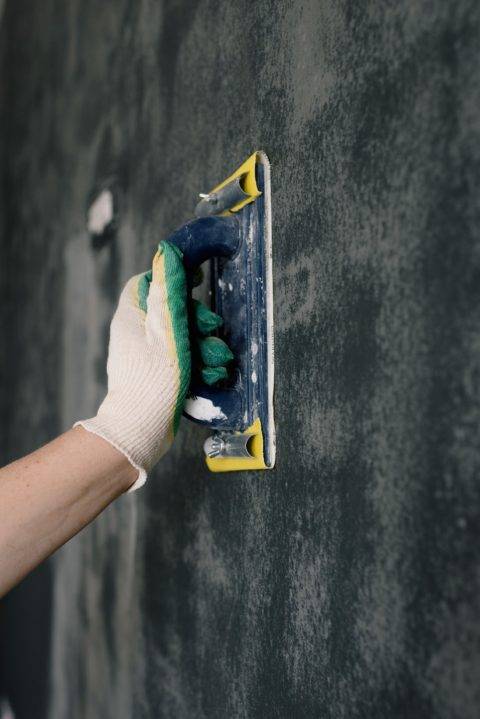
Spackle generally comes in pre-mixed tubs of different sizes. It is meant for smaller repairs. Things like dents and dings, small nail or screw holes, or even combined with drywall patches that are 2” x 2” or greater.
Spackle tends to dry a bit quicker and has less shrinking than a joint compound would. On average, spackle can dry in 30 minutes. That means being able to sand it and paint in a shorter period of time than you would with joint compound.
What is Joint Compound Used for?
Joint compound tends to be confused with spackle by the amateur DIYer. Also known as drywall mud (or simply “mud” by professionals), it is similarly comprised of gypsum dust. With joint compound, you can do the mixing, creating a consistency that is similar to cake frosting. Like spackle, there are pre-mixed tubs available for greater convenience.
Joint compound is typically used during drywall installation. Contractors will attach gypsum boards in large sheets to the wall’s framing. Using tape at the seams between the boards, they then cover the tape using the joint compound.
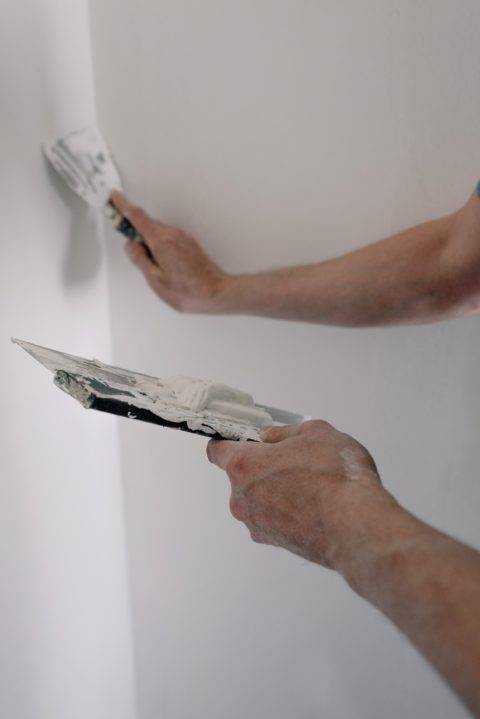
With a little bit of help, the joint compound is then smoothed out to create a smooth surface over the seams. If done right, the seams should be barely visible, if at all.
Spackle is not meant for larger applications like this. Plus, it dries too quickly. You need time to work with the joint compound and that would not be possible with the spackle.
Joint Compound Can Spackle
Joint compound is actually a versatile material. Let’s say you have some leftover joint compound and notice some nicks, dings, and dents in your walls. For small repair jobs like that, joint compound can work just fine in place of spackle.
The one thing to keep in mind if you are using joint compound for small repairs is that it can shrink. That means potentially needing multiple coats to do the job that spackle would do. Moreover, joint compound can take as long as 24 hours to fully dry, dragging out a small repair job for far longer.
There are joint compounds that come in a lightweight formula. The lightweight compounds are ideal for the smaller patchwork jobs because they dry far quicker than the typical joint compound.
But Spackle Doesn’t Go the Other Way
While joint compound can be used for small patchwork operations, spackle can not be applied in larger drywall operations. It is meant solely for the purpose of smaller patchwork jobs because of the rapidness in which it dries.
There are lightweight formulas for spackle, too. It has a vinyl binding agent that is great for smaller holes. There is also an all-purpose spackle that is made using acrylic. That all-purpose mixture is great for holes that range from ½-inch to ¾-inch in diameter. Both formulas are elastic, meaning they won’t shrink in the way that joint compound does.
Both Can Potentially Dry Out Quickly
Despite the differences between the two, it is possible for both spackle and joint compound to dry out quicky. With constant exposure to air, it does not matter what you use; they will dry out just like the other products.
When working with either product, there are two rules of thumb. The first is to work quickly. Don’t necessarily rush but don’t drag things out longer than they need to. The second is that, when not in use, the product should be properly covered. Even a little too much exposure can lead to a change in texture and ease of use over time.
For joint compound, it is not uncommon to mix up a batch yourself. Whenever you make joint compound yourself, it is imperative that you only make as much as you need. That might sound simple but making batches that are too large is common and leads to a lot of wasted compound as a result.
The Differences When Performing Small Patchwork
It is good to know that both spackle and joint compound can be used in small patchwork. But there are some differences between the two that can make each different from one another. For instance, spackle may be optimal for holes ½-inch in diameter or less.
Anything bigger than that and you may want to opt for a joint compound with some reinforcing mesh. These are squares with a metal mesh behind them, typically aluminum, that goes over the hole. The purpose is to give the joint compound a surface to bind to.
When using that reinforcing mesh, the key is to make it as flat and level as possible. When it sits unevenly, there is the chance of bubbling. Bubbling leads to uneven application of the joint compound.
What are the Pros and Cons of Spackling?
There are a lot of things to like about spackle. Knowing what it can offer (and what it can’t do) are important steps before you head to the home improvement store. Let’s break down the pros and cons of using spackle.
The Pros
The most notable pro of spackle is that it is perfect for small repair jobs. If you have a dent, ding, nail hole, or any other small imperfection in your walls, spackle will take care of the job in short order. Not only that, it is way more cost-effective compared to buying a joint compound that basically equates to overkill.
Spackle is also much more user-friendly than joint compound. Just about anyone can go to the store, grab a pre-mixed tub, and put it to good use. Even better, those small tubs can last a long, long time. Anytime that you rub into those small damage issues, just break out the spackle, sand, and paint. It can be done in a few hours at the most.
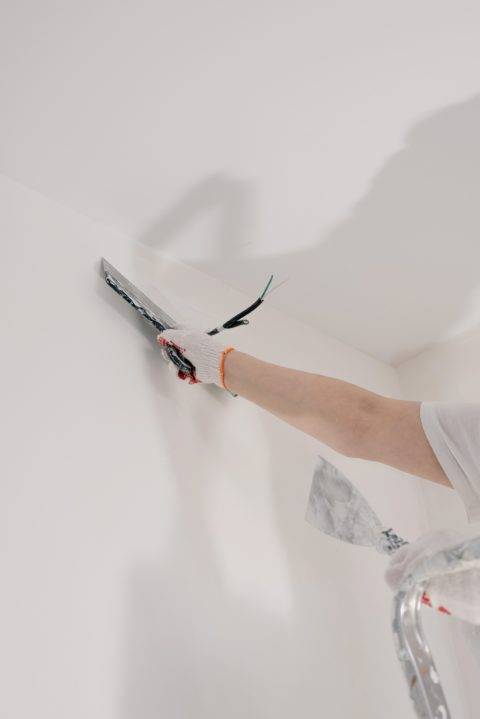
The Cons
The downsides are really very small and you kind of know about them going into picking out spackle for the job anyways. For one, it is a small-use application. If you have a massive hole in your wall, then it is wiser to go with joint compound.
Secondly, you can’t use spackle as a sealant. It is meant to cover those small imperfections, drying quickly along the way.
The Pros and Cons of Joint Compound
Like spackle, there are definitely benefits and downsides to using joint compound. It also has its own individual usage, which enhances its strengths and minimizes its weaknesses. If you are thinking of using joint compound for your next project, here is what you should consider.
The Pros
Spackle has a rough finish to it. Joint compound has a high-quality finish, while also saving you the trouble of having to sand. That means less dust and less mess than spackle would offer.
Best of all, it can handle larger projects and even sealing. Using spackle would be very difficult and take quite a long time to get the job done. Having joint compound saves a ton of time and effort along the way and is quite easy to apply.
The Cons
When you skew away from seams and drywall work, things can be a bit questionable when it comes to using joint compound. For one, it is quite a bit heavier than spackle. The weight difference may not sound like much but can make a serious difference in the application process.
Also, you need to make sure those seams are taped properly. If they aren’t, the joint compound application will not look very good.
The Final Verdict
When it comes to spackle versus joint compound, it’s pretty simple. For smaller projects, go with spackle. When installing drywall or doing seam work, joint compound is the clear solution. In a pinch, either will work just fine for smaller patchwork.

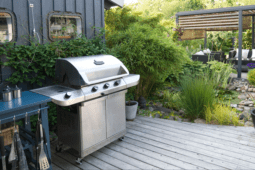
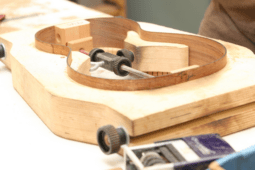
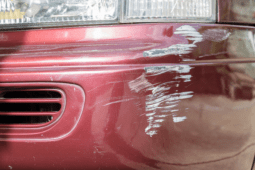
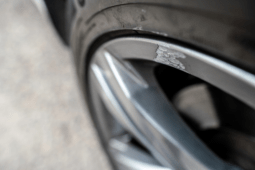
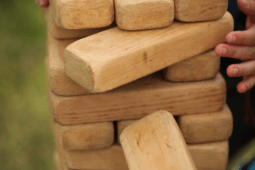
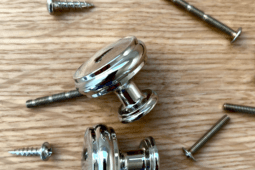
![How To Clean Patio Pavers [Without a Pressure Washer!]](https://www.manmadediy.com/wp-content/uploads/sites/52/2024/06/broom-15377-238x170.png)
